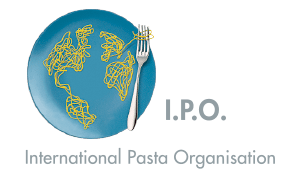PASTA FOR BEGINNERS:
GUIDE TO PREPARING TRADITIONAL RECIPES
(WITH A TWIST)
Pasta is more popular than ever, even making Google’s Food Trends 2016 Report. The reason it’s perennially a favorite food? Classic pasta dishes – or those with a twist – are versatile and easily adapted to cultural traditions around the world.
Introduction: Pasta For All
“Pasta enables you to create a culinary masterpiece in 10 minutes.”
Davide Scabine
There are more than 300 shapes of pasta. Each offers characteristics (size, texture) that pair best with a particular preparation or sauce. Here is an overview:
- In general, more “gentle” formats (such as farfalle or “butterflies”) match best with light and fresh ingredients. Think of a cold pasta with vegetables or pesto.
- More structured formats (tortiglioni or bucatini) combine well with robust sauces, say, a meat sauce like Amatriciana.
- Tube-like size pasta such as paccheri and ziti are ideal for hearty vegetable sauces or baked dishes.
- “Short sleeve” pastas such as penne or rigatoni are suitable for every-day quick and practical sauces but also structured enough for Carbonara.
- In general, porous or grooved surfaces better capture loose sauces (i.e., pesto), while a smoother texture is perfect for more “enveloping” sauces.
On the Menu
“Pasta in all its variations, in cuisines of the different countries, is not only everyone’s favorite food, but also an ideal form for chefs to express their special cuisine views. Basics are clear, but everything around pasta and its different ingredients are a huge field for imagination and self expression.”
Anna MaslovskayaCacio e Pepe: Here’s How To Get That Creamy Sauce…Without the Lumps
Although one of the most basic pasta dishes, Cacio e Pepe can easily go wrong. The cheese in the sauce can often become lumpy or congealed. The secret of this ancient preparation from Rome is found in the starch released from the pasta in the cooking water. To create a perfectly creamy sauce, it only takes a ladle of cooking water, heated in a skillet over low heat, with Pecorino cheese and a little oil. When the mixture reaches the right consistency, turn off the stove. Add well-drained pasta to the pan and cook over high heat for a few seconds. Done!
Carbonara Yes; Omelet-Pasta No: Here’s How
According to the Academy of Italian Cooking, Carbonara is the Italian dish most likely to be incorrectly prepared around the world. (Remember the outrage around a one-pot carbonara recipe posted on a French web site?) A true Carbonara is a simple affair, made with spaghetti, bacon, eggs, Pecorino cheese and freshly ground pepper. Preparation is key to avoid ending up with a pasta omelet. The secret? Immediately after draining, add the pasta to the egg/bacon/cheese/pepper mixture (off the heat). This will cook the egg and thicken the sauce. Use a bit of cooking water to loosen the sauce if still too thick.
Bolognese: Well Worth The Time
Many delicious pasta dishes can be created in a short 15 minutes. Bolognese is not one. YET the extra time is well worth the effort for this irresistible hearty sauce. This popular sauce, originating in the Italian city of Bologna, should simmer at least three hours, half-covered at very low heat. Truly, the longer the better! Italian grandmothers share their secret to balance the acidity of the dish and provide that special texture to the sauce: after cooking, add a little milk. Another tip is to always add the salt at the end of cooking to avoid an over-salted dish.
Spaghetti with Tomato and Basil: Cook it Risotto-style
A classic, timeless dish around the world is spaghetti with tomato and basil. Yet, its simplicity is a challenge, even according to Massimo Bottura, chef and owner of Osteria Francescana, named the World’s Best Restaurant in 2016. Often, simple pasta dishes end up either too watery or, conversely, too dry. To avoid this, steal a technique from risotto to create a perfect sauce: Drain half-cooked pasta, retaining its water. Then, add to the pasta a ladle of cooking water at a time until it is completely absorbed, similar to how rice soaks up water in risotto. The starch in the cooking water helps create a wonderfully creamy sauce. Top it with fresh tomatoes in the summer, canned peeled tomatoes in winter or add one of the many quality sauces available on the market. Ketchup? Never. Ever.
Pasta with Pesto: Break Out the Mortar
This gorgeously green, cheesy, nutty sauce is one of the most loved dishes of foreign tourists in Italy, but beware sub-par versions. It is easy to go wrong. For those who want to prepare pesto at home, forget the blender and break out a marble mortar. The trick is spinning the wooden pestle so that it doesn’t “beat” the basil but, instead, crushes it against the side wall. To get the right consistency, move in a circular motion. One last recommendation: Always top the pasta off the heat.
Pasta Salad: Keep it Al Dente With the “Bell” Method
Chilled and simple, pasta salad is especially welcome during warmer spring and summer days. The challenge, however, is to stop cooking the pasta at the right moment to avoid a mushy consistency. A common error? Cooling the pasta by rinsing it under water or leaving it in the pot to overcook. Here is a handy solution called the Bell Method. Cook pasta for two-thirds of the recommended time (if the cooking time indicated on the package is 14 minutes, boil it for just 10 minutes) and drain. Then, transfer pasta to a salad bowl and seal it with plastic wrap. The film will swell to look like a bell and the pasta will continue to cook. This method ensures an al dente pasta salad for the day of serving – or the next.
Amatriciana In a Pressure Cooker: The Ultimate “Green” Pasta
Ironically, a popular cooking method from the 70s and 80s can produce a very eco-friendly pasta. Go green by breaking out the pressure cooker to conjure up a favorite Italian dish like Amatriciana. Celebrated Chef Davide Scabin, speaker at the upcoming World Pasta Day event in Moscow, experimented with this technique with surprising results. Place the ingredients in a pot, with 100ml of water instead of the typical liter per 100 grams of pasta. Count 11 minutes from when you close the container (regardless of when pot whistles). Dinner is served – saving energy by using one pan instead of two, and using less water. For example, AIDEPI has calculated that if all Italians used this technique for cooking pasta, there would be a savings of 224 liters of water per year per capita, for a total of 17 billion liters of water spared. That is the amount of water needed to fill approximately 70 Olympic swimming pools.


